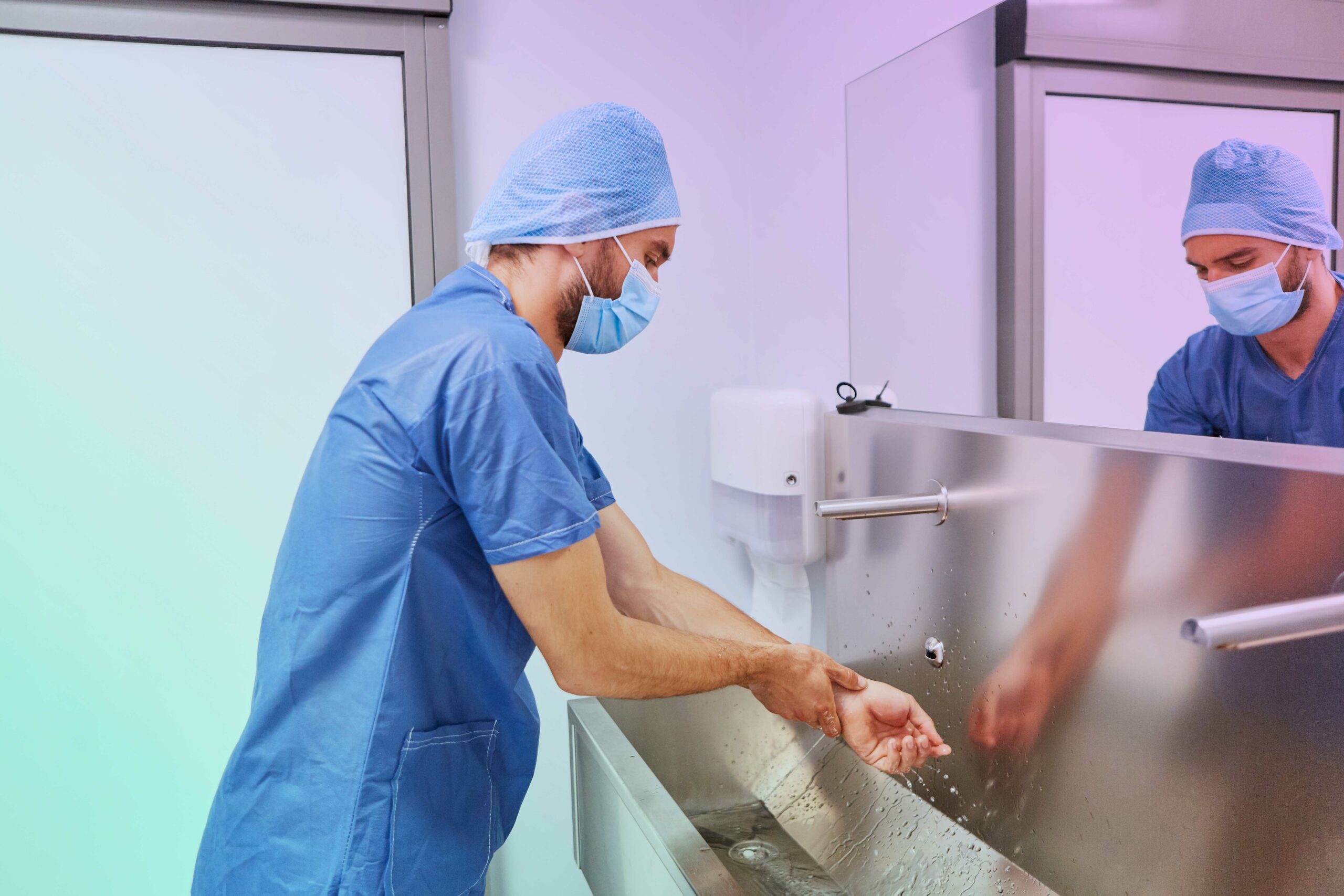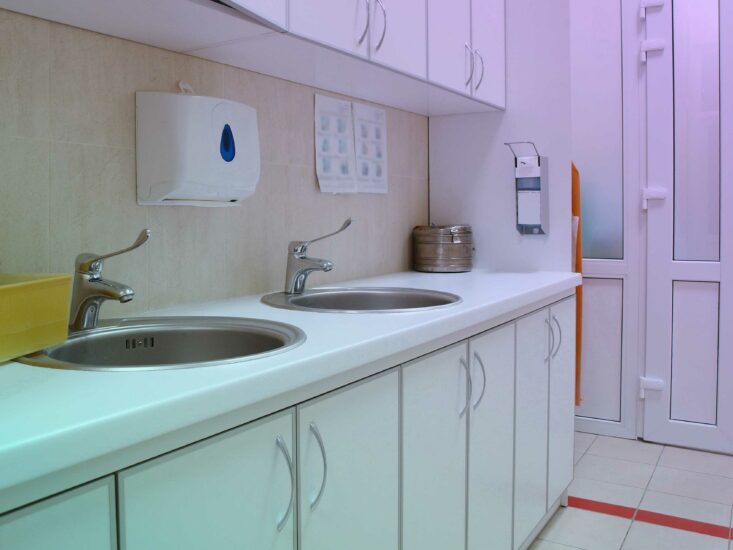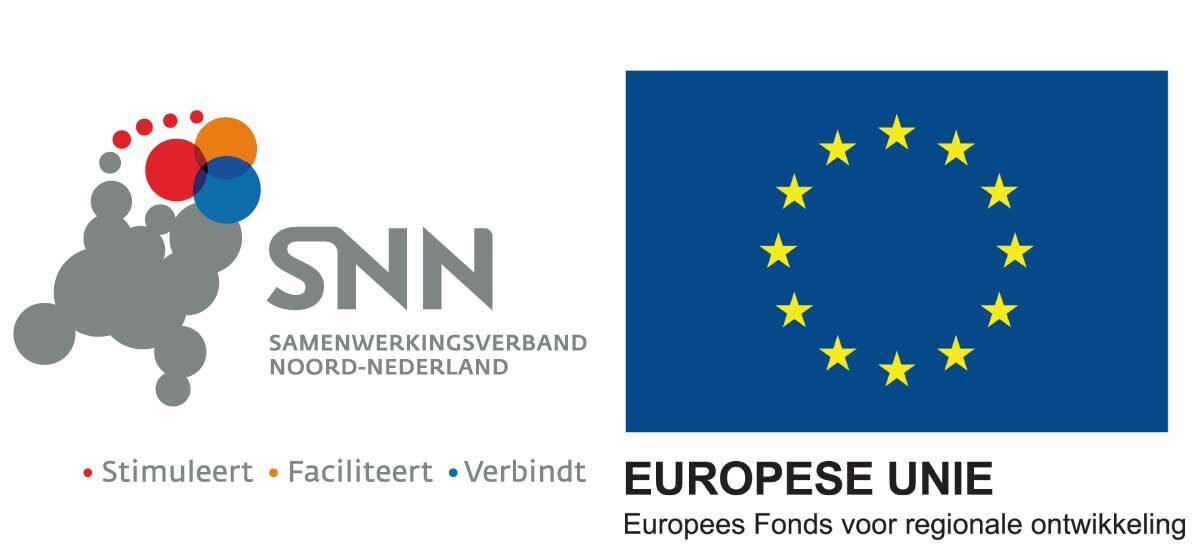Washing hands after medical procedures, rinsing saliva, nutraceutical drinks, and other nutrient-rich liquids – sinks in hospitals endure a lot. The consequence: a risk of (resistant) bacteria growth in the siphons. That is why the University Medical Center Groningen (UMCG) is investigating the use of special UV disinfection siphons: “Better safe than sorry.”
Siphons as a risk factor
Bacteria can be life-threatening for people with a compromised immune system. It’s no wonder that hospitals have strict hygiene rules and legionella protocols in place. However, sometimes the risks hide in unexpected places, such as siphons under sinks. Hanneke Lestestuiver, Environmental Advisor at UMCG, explains: “When washing hands, flushing out glucose residues from IV bags or nutraceutical drinks, or spitting, a lot of bacteria end up in the siphons. They can multiply in stagnant water and potentially infect patients and staff through aerosols. We suspect that this may have happened in the past.”
The dangers
Siphons provide a favourable environment for bacteria like E. coli, Enterobacter spp., and Citrobacter spp., which can cause various infections. Additionally, there is a risk of spreading resistant bacteria. “If patients are infected with a resistant bacterium and use the sink, the bacteria can multiply in the siphon”, says Lestestuiver: “Moreover, there’s a chance of further contamination. Due to the position of the siphon between the hospital and the sewer system, these pathogens can also spread to the sewer, increasing the risk of widespread dissemination of resistant bacteria.”
UV Disinfection Siphons
UMCG aims to minimize the risks. That’s why they are collaborating with Van Remmen UV Technology to explore the use of specialized UV disinfection siphons. These siphons disinfect flushed fluids using UV-C light. UV lamps break down microbiological contaminants such as fungi and bacteria. Kaspar Groot Kormelinck, RD-Manager at Van Remmen, explains, “UV is ideal for this application. It doesn’t use chemicals, doesn’t cause resistance, and treats both water and the air above it. With this application, you create a robust physical barrier between contamination and the patient. What was once a problem with the siphon has now become a solution.”
Network for Medication Residue in Northern Netherlands
UMCG and Van Remmen UV Technology found each other through the Network for Medication Residue in Water in Northern Netherlands. This interdisciplinary network of 44 members from healthcare, pharmacy, water, and technology sectors collaborates to reduce medication residue and resistance in water in the region. Thanks to funding from the European Regional Development Fund (ERDF/REACT-EU) and the Dutch Ministry of Economic Affairs, granted by SNN, the parties were able to set up the siphon project. The subsidized ERDF project is led by Healthy Ageing Network Northern Netherlands (HANNN).
Safety now and in the future
The UV disinfection siphons provide UMCG with added assurance that the sinks are safe for (vulnerable) patients and staff. However, they also hold broader societal value. “Sinks in hospitals contribute to the fight against Antimicrobial Resistance (AMR)”, says Ton van Remmen, director of Van Remmen UV Technology. “The danger of AMR should not be underestimated. The WHO and other experts observe that more and more bacteria are becoming resistant to antibiotics, making diseases we currently consider harmless potentially deadly again. Measures like this can help reduce those risks.”



